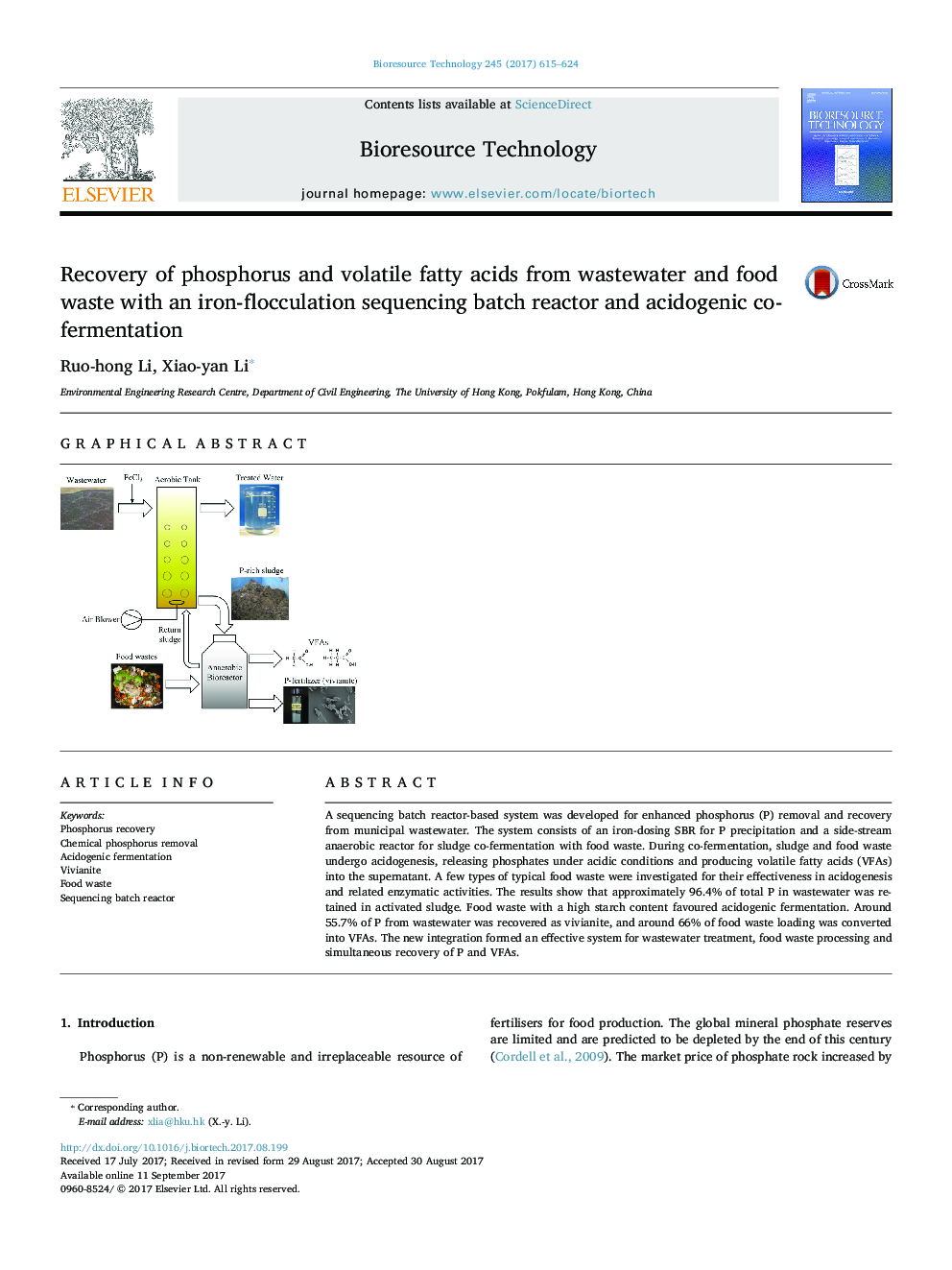| کد مقاله | کد نشریه | سال انتشار | مقاله انگلیسی | نسخه تمام متن |
|---|---|---|---|---|
| 4996785 | 1368274 | 2017 | 10 صفحه PDF | دانلود رایگان |
- Fe(III) dosing at 25Â mg/L for SBR increases the P removal to more than 95%.
- Co-fermentation of P-rich sludge with food waste facilitates P release into solution.
- Co-fermentation of food waste in the side-stream produces VFAs as organic resource.
- P can be effectively recovered by re-precipitation with Fe(II) to form vivianite.
A sequencing batch reactor-based system was developed for enhanced phosphorus (P) removal and recovery from municipal wastewater. The system consists of an iron-dosing SBR for P precipitation and a side-stream anaerobic reactor for sludge co-fermentation with food waste. During co-fermentation, sludge and food waste undergo acidogenesis, releasing phosphates under acidic conditions and producing volatile fatty acids (VFAs) into the supernatant. A few types of typical food waste were investigated for their effectiveness in acidogenesis and related enzymatic activities. The results show that approximately 96.4% of total P in wastewater was retained in activated sludge. Food waste with a high starch content favoured acidogenic fermentation. Around 55.7% of P from wastewater was recovered as vivianite, and around 66% of food waste loading was converted into VFAs. The new integration formed an effective system for wastewater treatment, food waste processing and simultaneous recovery of P and VFAs.
126
Journal: Bioresource Technology - Volume 245, Part A, December 2017, Pages 615-624
